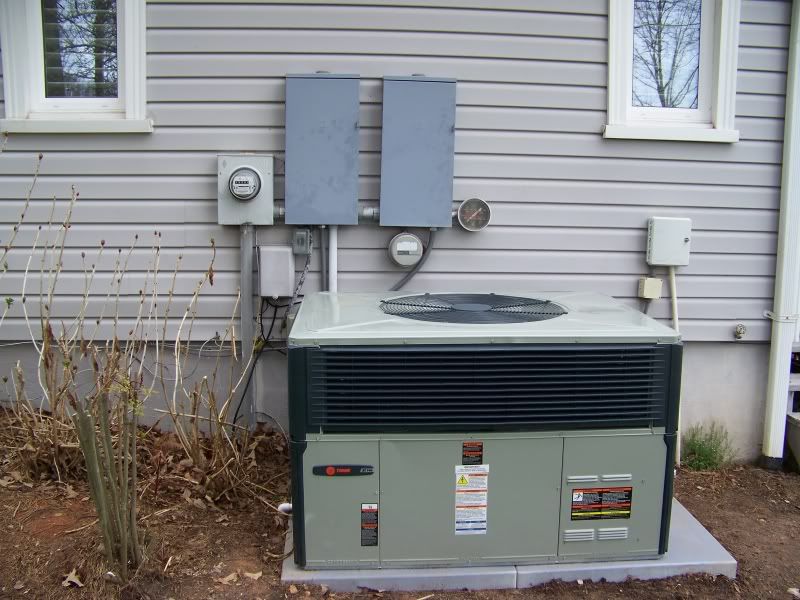fishin' electrician
Senior Member
- Location
- Connecticut
I kinda like that bench seat right there, take a load off while your tying a load in. 



In looking at the picture, I think you could get the working space by moving the PB on the right above the other one (or maybe to the left of or above the meter), and scooting the HVAC unit to the right as far as it will go on the pad.
As a guy who occassionaly has to jamb himself between panels and grounded conductive objects - I don't see it as trivial and see it as a definable hazard - almost as much as doing the same barefoot and wet.And you guys wonder why people go to such lengths to avoid permits and inspections. Trivial nonsense like this is just another reason to hire someone who will just do the work and not expose yourself to thousands of dollars worth of unneeded extra costs.
It would be one thing if there was an actual definable hazard, but a possible minor and fairly trivial code violation?
As a guy who occassionaly has to jamb himself between panels and grounded conductive objects - I don't see it as trivial and see it as a definable hazard - almost as much as doing the same barefoot and wet.
And you guys wonder why people go to such lengths to avoid permits and inspections. Trivial nonsense like this is just another reason to hire someone who will just do the work and not expose yourself to thousands of dollars worth of unneeded extra costs.
It would be one thing if there was an actual definable hazard, but a possible minor and fairly trivial code violation?
REALLY?!?!? I always wondered about those kids from that town... (grew up in E.Somerville)Needham is a dry town. You can't buy alcohol there.
And you guys wonder why people go to such lengths to avoid permits and inspections. Trivial nonsense like this is just another reason to hire someone who will just do the work and not expose yourself to thousands of dollars worth of unneeded extra costs.
It would be one thing if there was an actual definable hazard, but a possible minor and fairly trivial code violation?
I don't see how this is dangerous. You are not suppose to be working on live equipment!
I agree. It's easy enough to find someone who will do this install without a permit. The same guys beat me on estimates everyday because they are willing to cut corners.
I don't see how this is dangerous. You are not suppose to be working on live equipment!
Who should be responsible for repairs? Of course the replacement installer should have called the inspector before touching anything.
I don't see how this is dangerous. You are not suppose to be working on live equipment
Kinda hard to troubleshoot DEAD equipment. We are there to find out why the heat does not work at 11 pm and it is 20 degrees outside.I can't get enough room to see the controls.
I think we can all agree it is inconvenient to work on. I am not sure what electrical equipment stuffed behind the unit would likely need to be serviced live in the future. A PB usually either works or does not work. I don't see much else there. Am I missing something stuffed behind the HVAC unit that might need to be worked on live?
Oftentimes the control access is on the back side of the condensing units which is placed toward the house. You apparently don't do much in the way of trouble calls or you would know this. This was not a slam just an observation. So,yes you missed it.The guys that do this type of work need space to work in. The older and fatter the more space required.
Yes I am the older and slightly fatter version.
I think we can all agree it is inconvenient to work on. I am not sure what electrical equipment stuffed behind the unit would likely need to be serviced live in the future.
That is not true.
What's this "shoulda been brought to the inspector" crap.
Any qualified licensed electrician should recognize that the original installation was not code compliant and communicated such to the HVAC contractor.
This unit should have been relocated upon replacement and the contractors involved should be responsible for the relocation.
Kinda hard to troubleshoot DEAD equipment. We are there to find out why the heat does not work at 11 pm and it is 20 degrees outside.I can't get enough room to see the controls.
I thought osha does not allow work on live equipment. Exception being life critical equipment. (just referring to the panel here, not troubleshooting the unit)
There are bigger fish to fry. Yet somehow they always get away.


